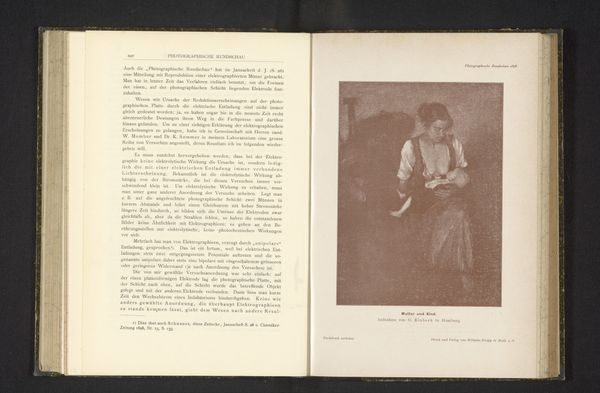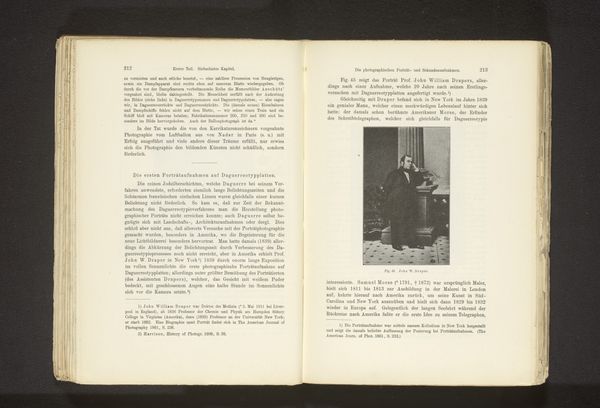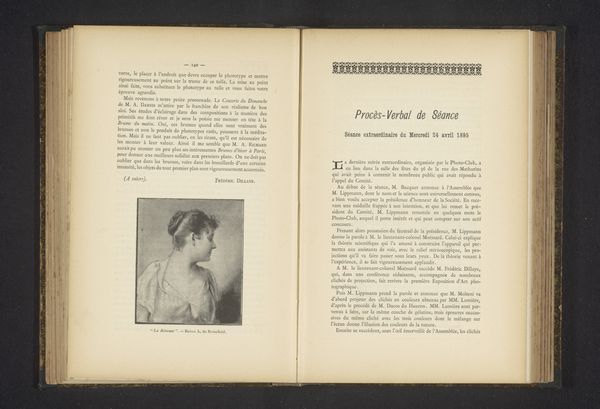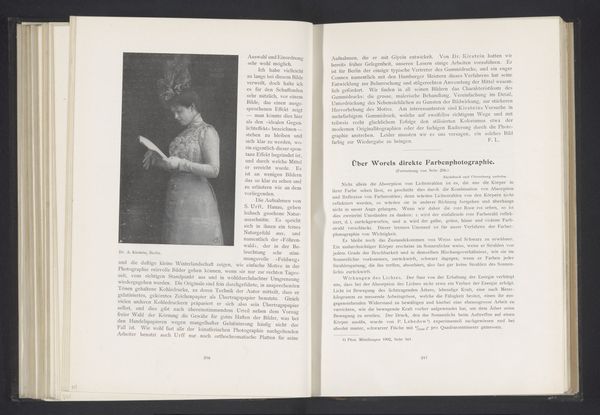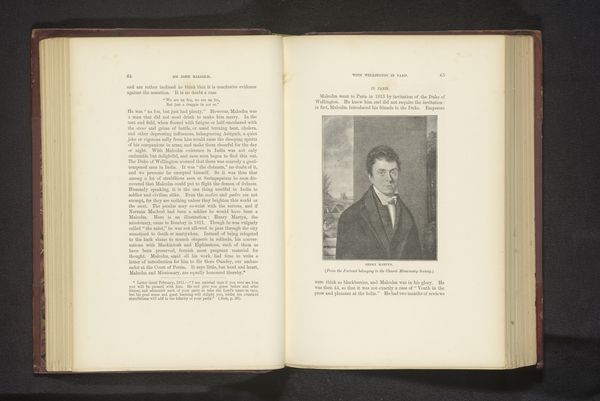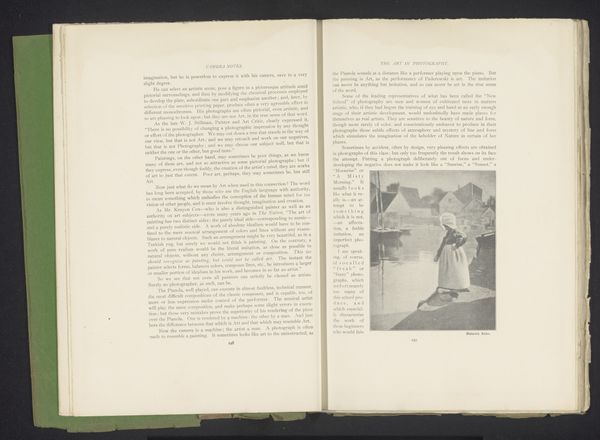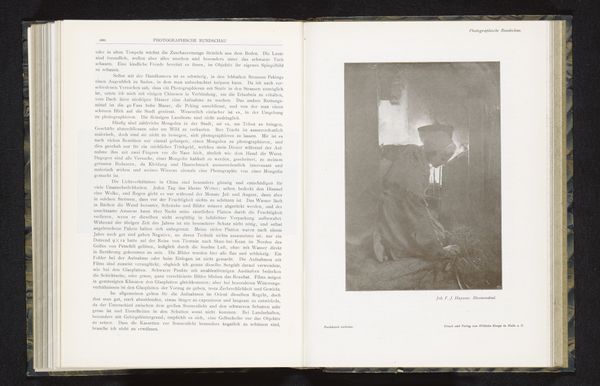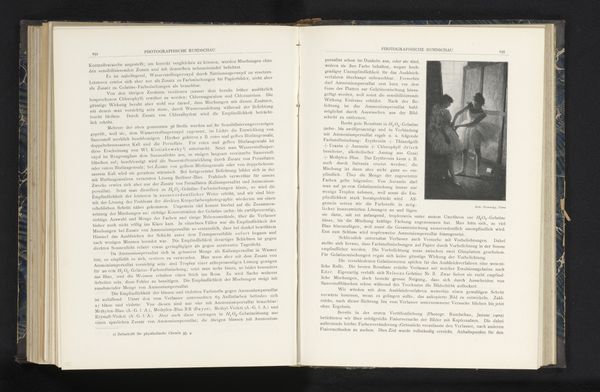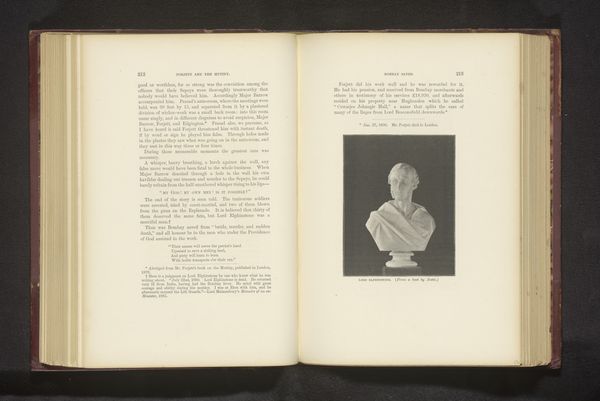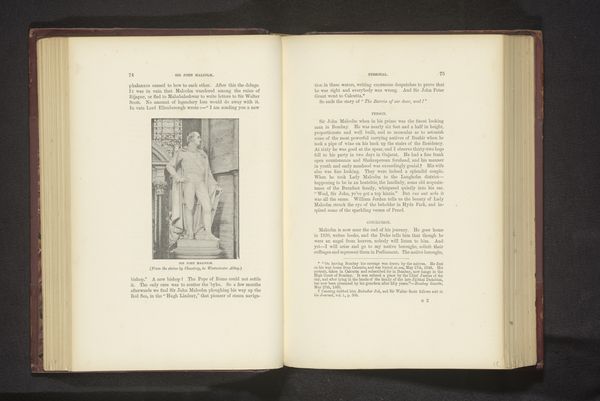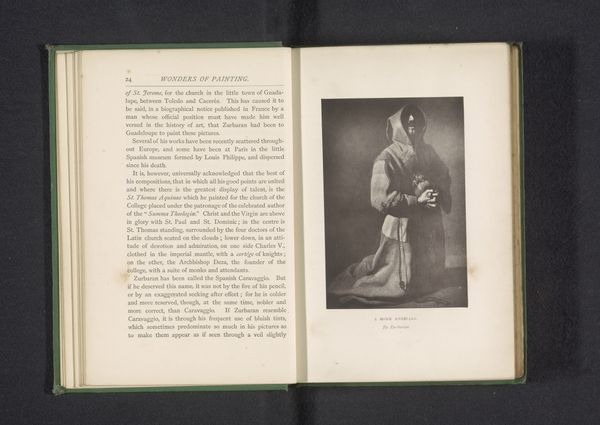
Fotoreproductie van een foto, voorstellende een zelfportret van Robert Cornelius before 1905
0:00
0:00
print, photography
#
portrait
# print
#
book
#
photography
Dimensions: height 101 mm, width 81 mm
Copyright: Rijks Museum: Open Domain
Curator: Here we have a photomechanical print that reproduces an early self-portrait by Robert Cornelius, likely taken before 1905. It’s part of a book, if you look closely. Editor: It has such a fragile, haunted feel. I wonder about the person depicted within. It's like looking at a ghost trying to materialize on the page, almost an attempt to hold on to a passing moment. Curator: Considering its status as a reproduction within a book, we should consider this as a commodity – reproducible and replicable within an emerging mass media landscape. Cornelius would not have seen this dissemination. Editor: That takes some of the mystique away, in a way, doesn’t it? It also introduces the potential for altered interpretation. But maybe even with those reproductions, people still connect with the idea of identity being captured, however many times removed. Curator: That makes me think about labour: the process of making it, publishing it, and the historical labor it represents. What were the social conditions allowing that particular reproduction to be made? Editor: I also sense the artist reaching for something… maybe a permanent presence, a sort of proof of existence in an era where such a thing felt truly radical. The vulnerability on his face feels especially striking. Curator: I am reminded, that photography like this helped to produce notions of idealization and classification that in time helped to structure hierarchical labor processes of photographic labor and, subsequently, artistic valuation. Editor: I feel myself gravitating back to that lone individual within. Something about that intense stare really grounds us. He managed to pierce through all that materiality. Curator: So we have come full circle; starting with a focus on material processes but perhaps also reflecting on the enduring power of a reproduced image and the labour it reflects. Editor: Yes. That moment captured, even at several removes, retains its original poignancy, which seems to resist any reduction to purely material components.
Comments
No comments
Be the first to comment and join the conversation on the ultimate creative platform.
